About freaks and people: indecent pictures of Diana Arbus
Why did a successful girl from a rich Jewish family of the Nemerovs photograph the poor and the foolish? She showed American society from the other side, singing marginal aesthetics. Diana Arbus' shocking vision of beauty made her one of the most influential photographers of the XX century. Everyone was in her lens — from the stars to the dregs of society.

Diana Arbus was made famous by her extraordinary pictures, the heroes of which were most often people with various physical disabilities. She was called a freak photographer and was often accused of showing the world what he didn't want to notice. But in reality, it was an infantile interest in the unsightly manifestations of life that pushed Diana to her frightening models, and not vice versa.

Although Diana's life was arranged from birth, self-will and perseverance began to make themselves felt from a young age. At the age of 13, having fallen in love with a young worker from her father's store, she told her parents that she would marry him. A rich family with a patriarchal disposition was not happy about this prospect, but five years later, barely Diana turned eighteen, she fulfilled her promise by changing her surname to Arbus.

Alan Arbus, a young and poor dreamer, was forced to give up his dream of becoming an actor for the sake of supporting his family. Trying to find a more or less worthy niche, soon after the wedding he graduated from photography courses. Immediately after the Second World War, with the help of Diana's father, the couple opened a fashion photography studio "Diana and Alan Arbus" (Diane & Allan Arbus). Soon orders began to arrive from publications such as Harper's Bazaar, Glamour and Vogue, but Diana's role in all these projects was limited to the duties of an assistant.
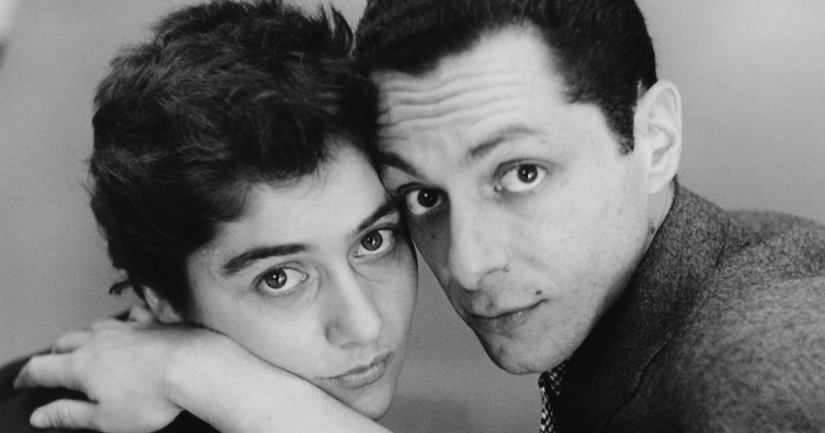
Alan dealt with the whole technical side of the issue: he shot, developed the film and printed the pictures. He was satisfied with what he was doing. And he did the same thing as most fashion photographers of that time: he put the model on a white background and pressed the shutter button.
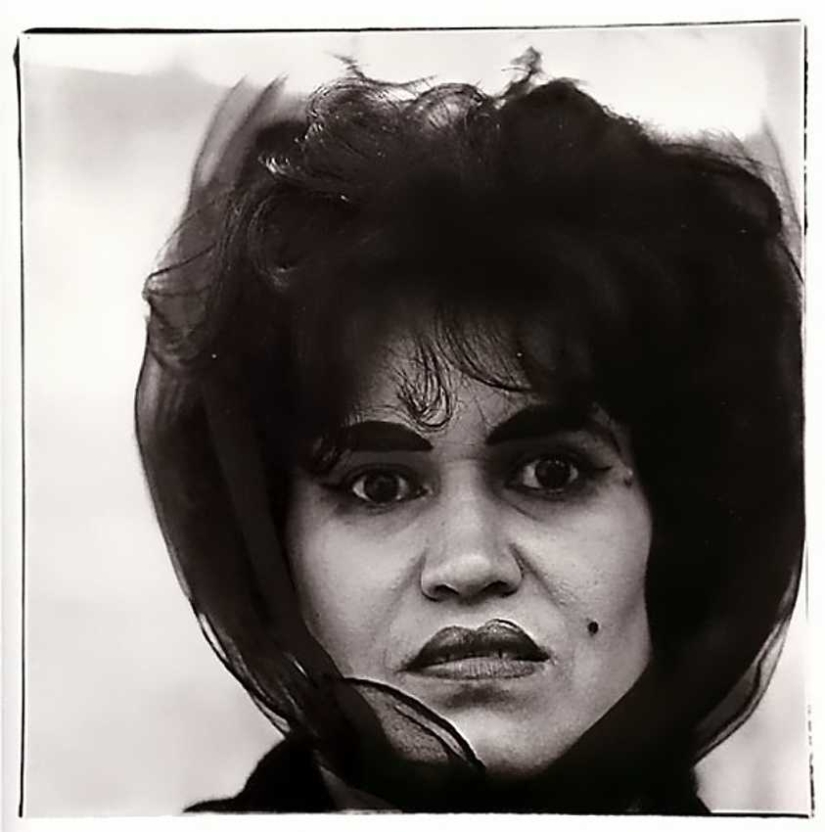
Although the studio was successful, Diana was rarely happy with the result. Being responsible for the creative side of the work, she wanted to give each picture a story, bring the essence of the frame to its surface, reveal the hero. But all this was too far from the sleek standards of glamorous shooting. Thus, the joint work of the Arbus spouses turned into an incessant stress for both.

In the 50s, looking back at her life, Diana realized that, despite all the internal riots and protests, she still became what she wanted to see from childhood. She was already a caring mother, a faithful wife and a compliant assistant, but she became the Diana Arbus that we know now thanks to her acquaintance with photographer Lisette Model.

"Take pictures out of your guts!" — Lisette Model instructed her student, in a rather rude and literal form, urging her to shoot, being frank with herself. It wasn't difficult for Diana. It seemed that all these years she just needed a reason to be liberated. Photos of Diana changed overnight, it was recognized by everyone who followed her.
"After three months, she had her own style. At first, only graininess and two-color. Then — perfection," Lisette Model wrote about her student.

Shortly after the termination of their joint work, Diana and Alan divorced. He wanted to get married a second time, and from now on she was passionate about photography — her true passion. Thanks to Lisette, Diana has already gained freedom internally, and the divorce has made this feeling physically tangible.

"I always felt that it was our separation that made her a photographer. Apparently, I didn't match her aspirations. She was ready to go to bars and to people's houses. It terrified me," recalled Alan Arbus.

Diana's photographic interests ranged from affluent neighborhoods along Park Avenue to Brooklyn slums. She was eagerly looking for heroes for her pictures in parks and on the streets, but not in order to secretly release the shutter. In order to "shoot with her gut," as Lisette Model taught her, she felt the need to observe the objects of her attention for a long time, communicate with them, recognize them and even come to their home.
Diana, fragile and with a disarmingly thin voice, aroused the confidence of everyone she addressed. It was not difficult for her to penetrate into anyone's personal life. The young woman looked at things and people without prejudice, and therefore involuntarily subordinated them to herself.

One day she met a man in the park: he was calmly sitting on a bench, dressed in a woman's dress. Diana took some pictures right there, and the rest at the man's house. First in clothes and a wig, and finally completely naked. The naked male body, which so naturally assumed a flirtatious female pose, did not cause Diana rejection, only sincere interest.
 So there was a picture of a "Naked Man portraying a woman" (Naked Man Being a Woman).
So there was a picture of a "Naked Man portraying a woman" (Naked Man Being a Woman).
Another example of "home" pictures is "A giant Jew at Home with His parents" (Jewish Giant at Home with His Parents). An average married couple in their living room would look inconspicuous if it weren't for their overgrown son hunched over the ceiling. The mother looks up at her child: either with surprise, or with pride.

"If I was just curious, it would be very difficult to say to someone: "I want to come to your house so that you can talk to me and tell your life story." I would have been told, "You're crazy." And they would have immediately pulled away. But the camera is a kind of pass," admitted Diana Arbus.
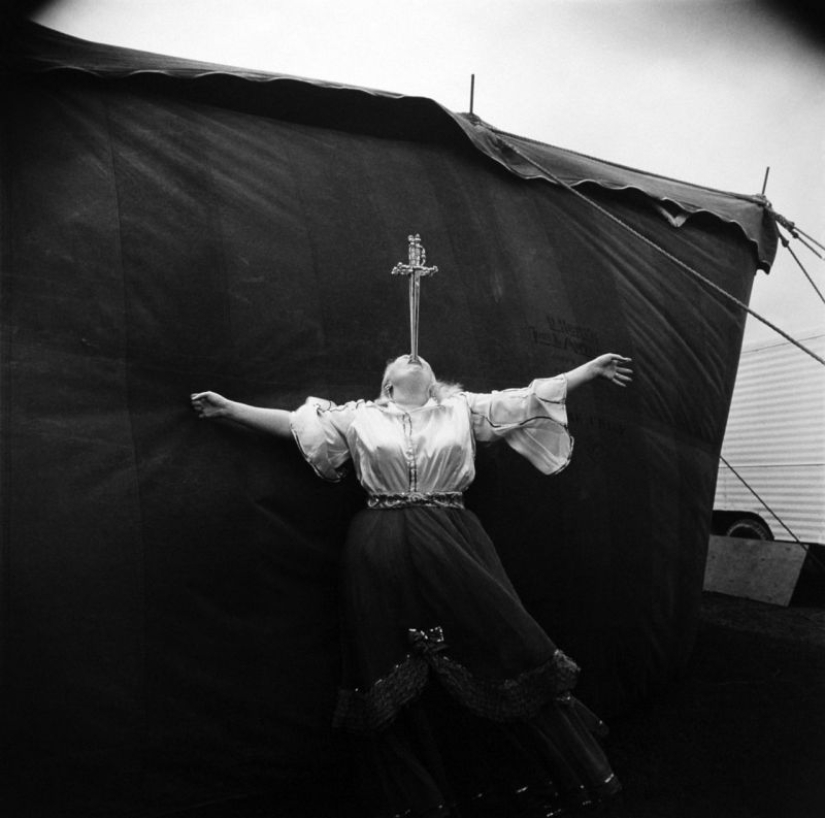
Diana used the influence she had on people. However, they were really interesting to her, especially those who were not noticed by society. Dwarfs, giants, transvestites and freaks seemed to her the most interesting characters of all possible. Their deviations seemed to her, if not perfection, then an advantage. According to her, the vast majority of people live their lives fearing the injuries they may receive, but those who have physical disabilities from birth have already passed this test. For Diana, there was nothing in them that could cause pity or disgust, and therefore the spontaneity with which she took them off, and now a sensitive viewer will make a shrug.

Diana was touched by the gratitude with which people with physical deformities opened up to her. And indeed, none of the pictures can be accused of staging. All of them are made as if crowds of mentally ill people in carnival masks, half-naked transvestites in lush wigs and down sisters with frightening smiles walk around on the streets of New York every day. They all look straight into the lens, full of self-sufficiency and the will to live. In a way that no one expects from them, because they usually don't look at them at all.

"I am really convinced that there are things that no one saw until I photographed them," said Diana Arbus, as if hinting at the voluntary blindness of society.
In the context of Diana's work, the captured stories from the lives of "normal" people call the very concept of normality into question.
 For example, as in the picture "A young Brooklyn family going for a Sunday outing" (A young Brooklyn family going for a Sunday outing). There may be doubts about the mental health of the child, but in fact he was just fooling around.
For example, as in the picture "A young Brooklyn family going for a Sunday outing" (A young Brooklyn family going for a Sunday outing). There may be doubts about the mental health of the child, but in fact he was just fooling around.
 Something unhealthy is also seen in the portraits of ordinary New Yorkers, young couples and children. The picture "Identical Twins" makes a kind of mystical impression, although in reality it depicts ordinary seven-year-old twins, whom Diana noticed at one of the Christmas parties.
Something unhealthy is also seen in the portraits of ordinary New Yorkers, young couples and children. The picture "Identical Twins" makes a kind of mystical impression, although in reality it depicts ordinary seven-year-old twins, whom Diana noticed at one of the Christmas parties.

An inexpressible sense of tragedy, albeit implicitly, comes from almost all of Diana's pictures. Perhaps this is due to the passive square format or the rough light of the flash, making the photos either excessively white, or, on the contrary, drowning in blackness. But the main means that Diana has subdued herself is chance. She deliberately gave up control and allowed the situation to lead her where she needed to, and the models to find a place in front of the lens on their own. She just had to catch the moment and pull the trigger.
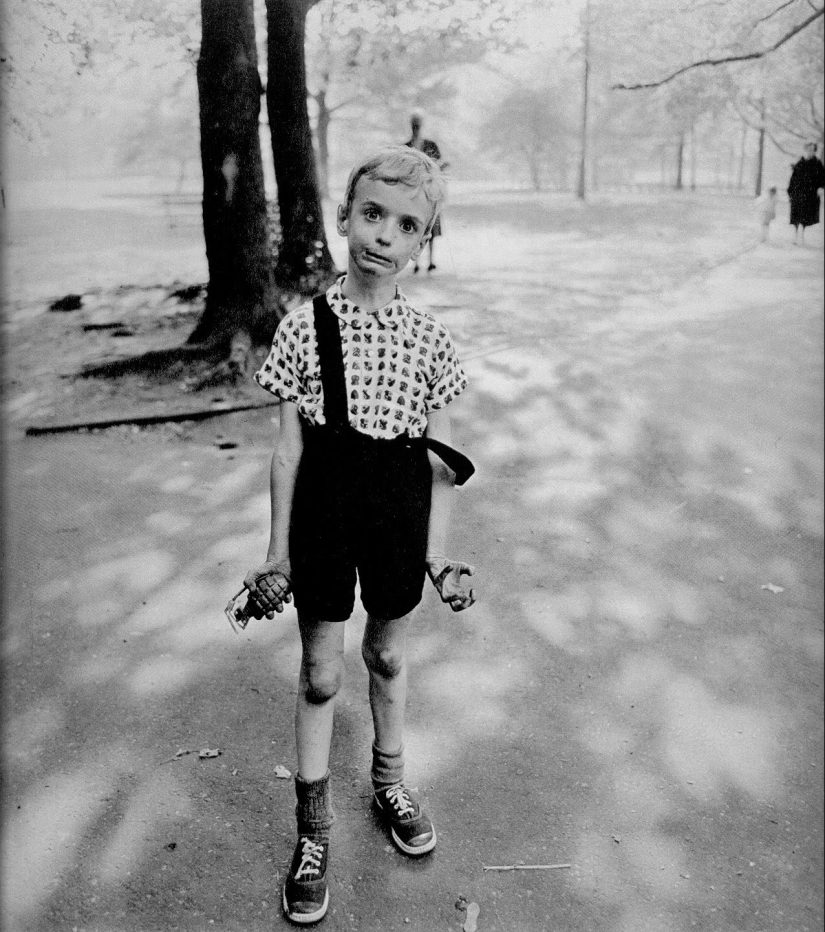
"I do not know what a good composition is. There are certain "right" and "wrong". And sometimes I prefer what is wrong," the photographer said.

Diana has always felt the need to shoot people with stories heavier than her own. This became especially important after suffering from hepatitis, which doomed her to bouts of depression, useless therapies and a diet rich in medications. Diana managed to get permission to shoot in institutions for the mentally retarded, and she was able to spend as much time there as she needed. In the pictures she took, the truthfulness was not just of great importance, but was screaming.
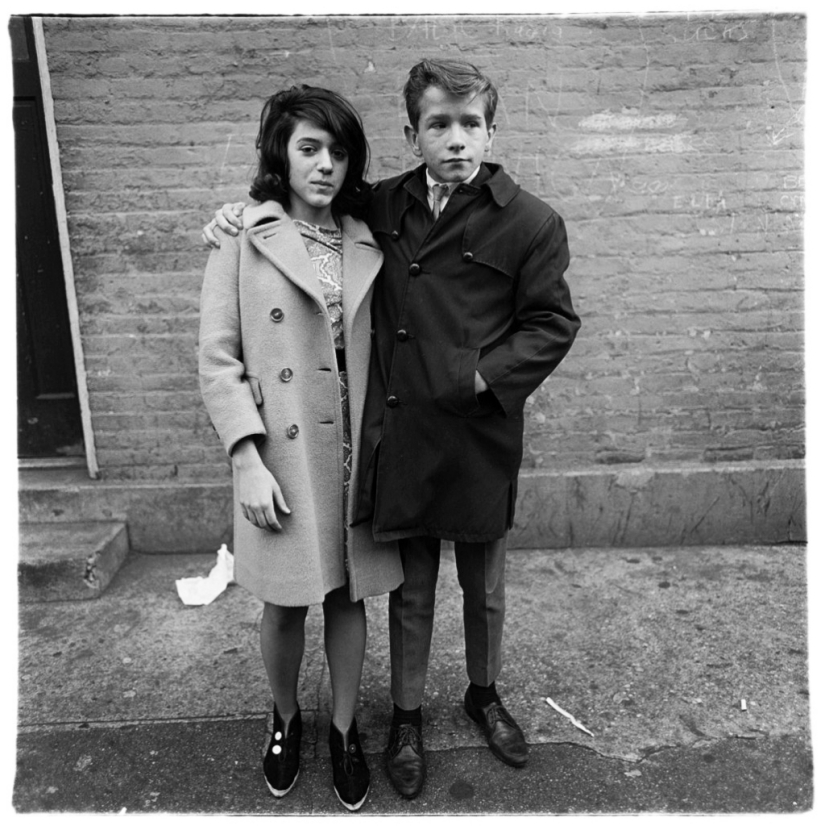
Many publications, such as Esquire and the New York Times, felt the need to switch from staged photography to reportage, and what Diana Arbus could offer them fell into the top ten. During the last eleven years of her life, more than 250 works were published. She received an award from the American Society of Magazine Photographers and the support of the Guggenheim Museum.

However, the illness threw her from one broken state to another, even more severe, making her feel exhausted and disappointed more and more often. In 1971, Diana committed suicide, although at the time of her death she was already quite famous and popular both in America and abroad. Biographers like to pay special attention to her death and make various guesses about it, but in fact no one can say with certainty about the true reason for such an act. Diana chose to leave this secret unsolved.
Recent articles

There is a perception that people only use 10% of their brain potential. But the heroes of our review, apparently, found a way to ...

We never know where and when we will come across something unknown, beautiful, and at first glance, unreal. In this post you will ...

It's high time to admit that this whole hipster idea has gone too far. The concept has become so popular that even restaurants have ...